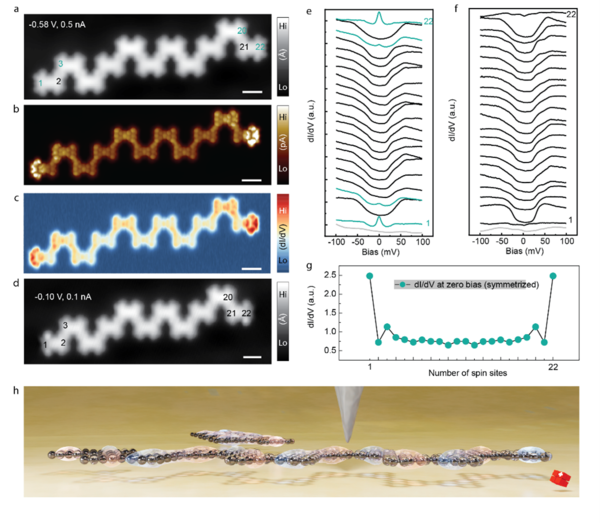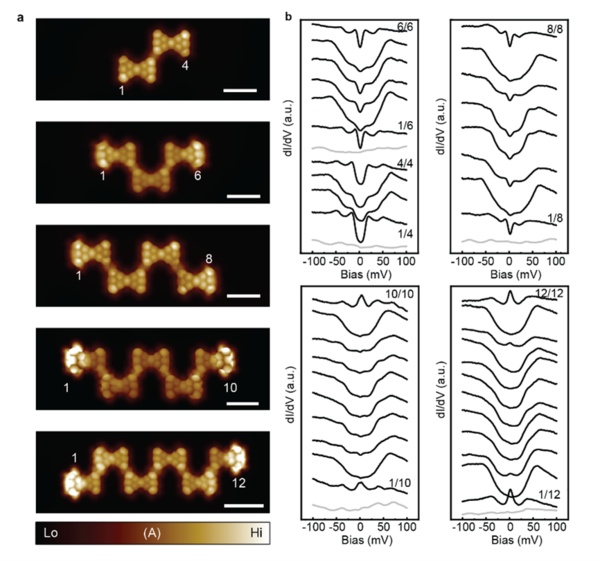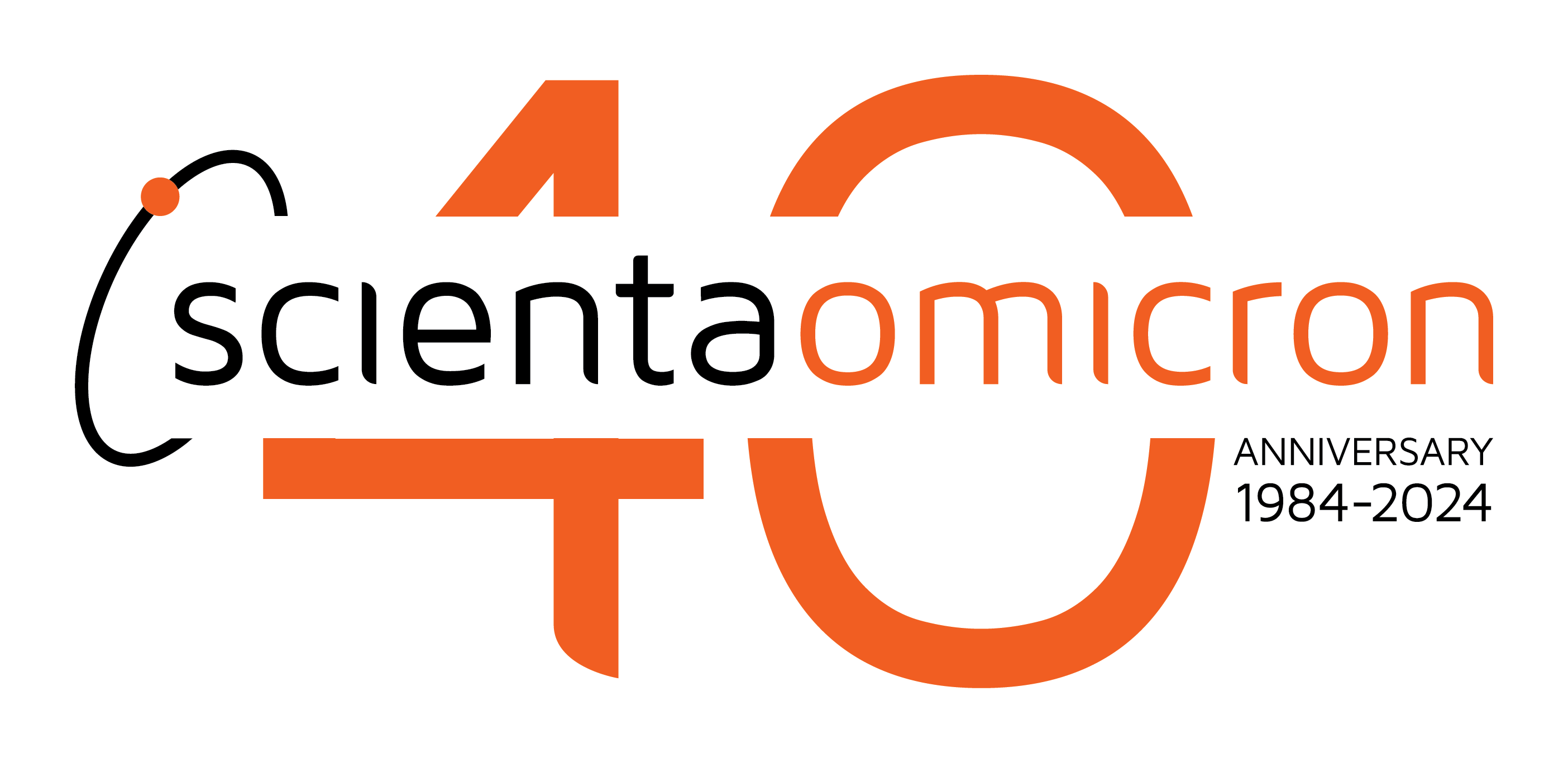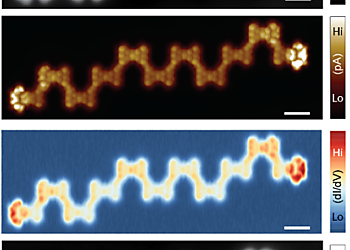Tunable topological phases in nanographene-based spin-1/2 alternating-exchange Heisenberg chains
Result of the Month
Author: Chenxiao Zhao, Gonçalo Catarina, Jin-Jiang Zhang, João C. G. Henriques, Lin Yang, Ji Ma, Xinliang Feng, Oliver Gröning, Pascal Ruffieux, Joaquín Fernández-Rossier Roman Fasel
Institute:
''Empa – Swiss Federal Laboratories for Materials Science and Technology, Dübendorf, Switzerland. ''
Nature Nanotechnology
URL: https://www.nature.com/articles/s41565-024-01805-z
Date: 8/2025
Instruments:
LT STM Lab
Unlocking the potential of topological order in many-body spin systems has been a key goal in quantum materials research. Despite extensive efforts, the quest for a versatile platform enabling site-selective spin manipulation, essential for tuning and probing diverse topological phases, has persisted. Here we utilize on-surface synthesis to construct spin-1/2 alternating-exchange Heisenberg chains by covalently linking Clar’s goblets—nanographenes each hosting two antiferromagnetically coupled spins. Using scanning tunnelling microscopy, we exert atomic-scale control over chain lengths, parities and exchange-coupling terminations, and probe their magnetic response via inelastic tunnelling spectroscopy. Our investigation confirms the gapped nature of bulk excitations in the chains, known as triplons. Their dispersion relation is extracted from the spatial variation of tunnelling spectral amplitudes. Depending on the parity and termination of chains, we observe varying numbers of in-gap spin-1/2 edge excitations, reflecting the degeneracy of distinct topological ground states in the thermodynamic limit. By monitoring interactions between these edge spins, we identify the exponential decay of spin correlations. Our findings present a phase-controlled many-body platform, opening avenues toward spin-based quantum devices.

Tip-induced even-odd Haldane phase transition.
a, Topographic image of a J1-terminated goblet chain with L = 22. Vbias = −58 mV, Iset = 500 pA. Scale bar, 2 nm. b, Current image of the even Haldane chain shown in a, Taking with a Co-functionalized tip- in constant height mode with Vbias = −5 mV. c, dI/dV map with Vbias = −5 mV for the even Haldane chain shown in a. d, Topographic image of a J2-terminated chain with L = 20, obtained by passivating the two edge spins of the chain shown in a. Vbias = −100 mV, Iset = 500 pA. Scale bar, 2 nm. e,f, dI/dV spectra (Iset = 500 pA, Vrms = 2 mV) taken at each spin site of the chains shown in a and d, respectively. g, Spatially-resolved ZBC extracted from experiments (symmetrized along the chain). h, Schematic spin model of the goblet chain.

Length-dependent spin excitation.
a, Current image for even-Haldane chains with different lengths (L=4 to 12). Taking with a Co-functionalized tip- in constant height mode with Vbias = −5 mV. b, dI/dV spectra (Iset = 500 pA, Vrms = 2 mV) taken at each spin site of the chains shown in a. The background spectra taken on the Au(111) substrate are shown by gray curves.



